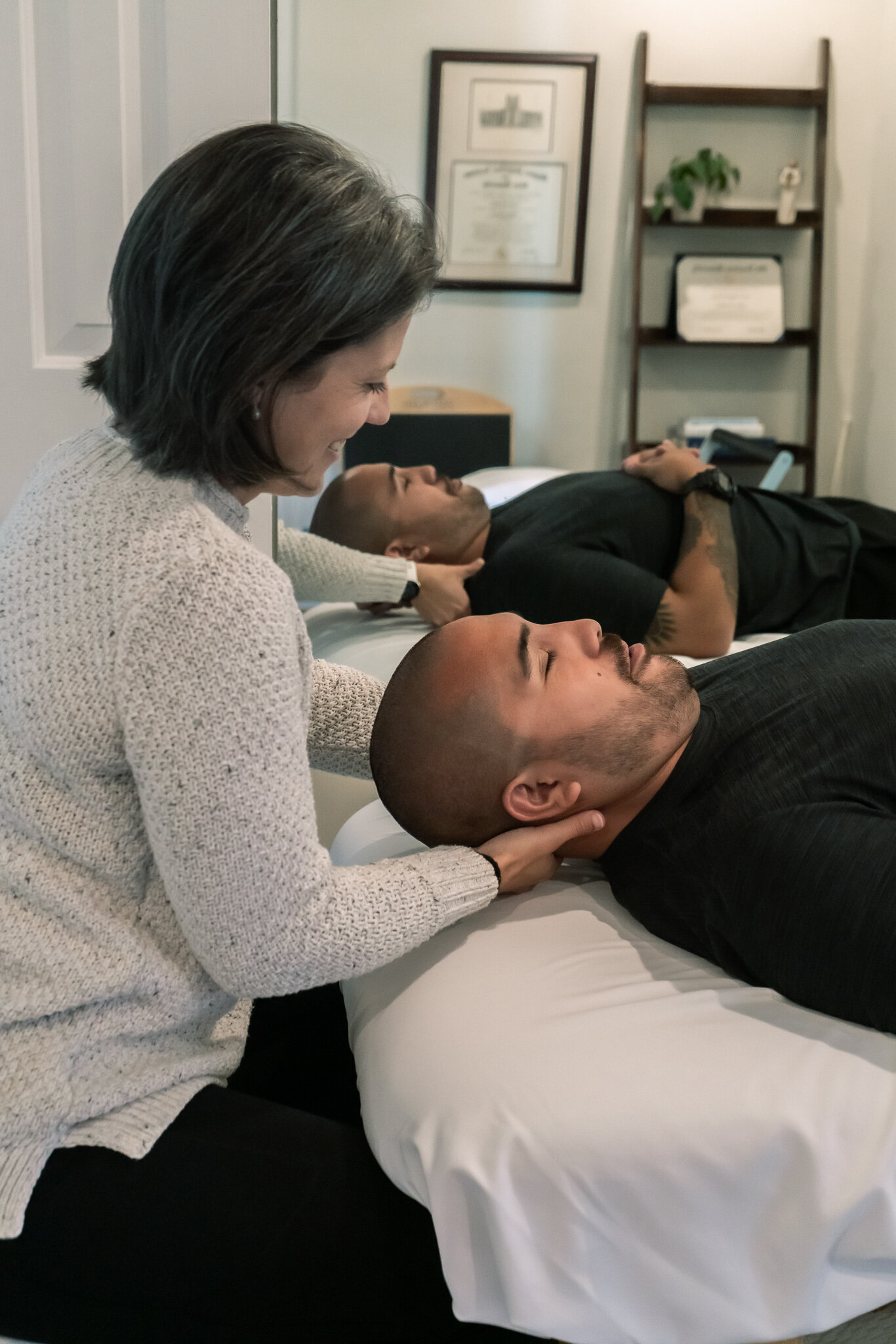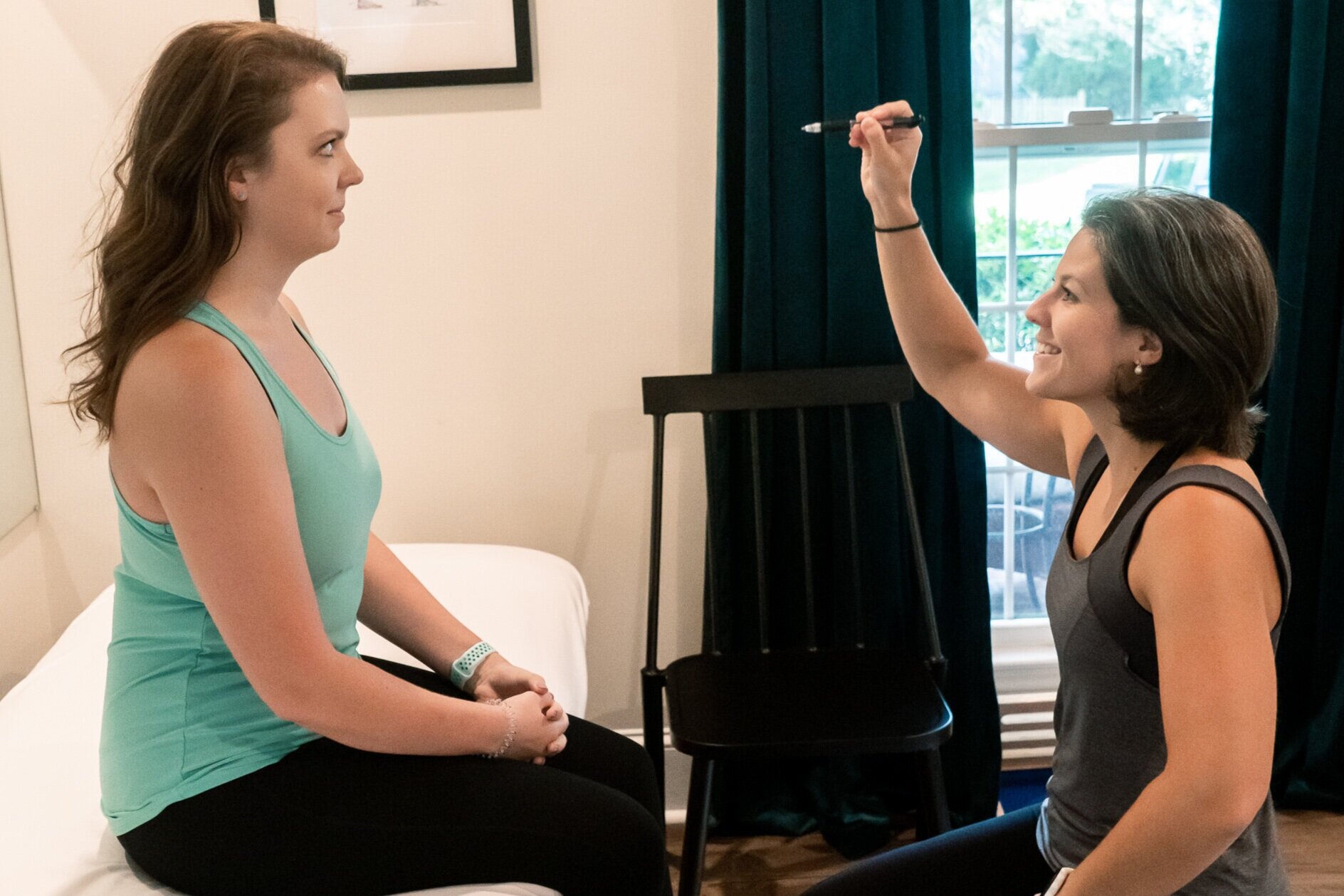Postconcussion Syndrome
Although described as mild on the spectrum of traumatic brain injuries, concussions or mild traumatic brain injuries (mTBI) are anything but mild due to the possible debilitating effects on everyday life. Fortunately, as with any condition, early recognition and skilled treatment can hold promising results.
Concussions or mild traumatic brain injuries (mTBI) can occur during sports play, car accidents, falls, or with other traumatic events.
Direct, blunt trauma to the head does not have to occur, those who have a whiplash like mechanism of injury can also result in concussion.
Loss of consciousness is rare but does occur. Sometimes amnesia from an unobserved event like a fall may be mistaken for loss of consciousness.
Symptoms are not alway immediate, they can be delayed for hours or even days.
For most, symptoms will resolve within 2 weeks but if they persist beyond 2 weeks then discuss the possibility of Postconcussion Syndrome (PCS) with your medical provider so that you may initiate treatment ASAP if you haven’t already done so.
This is a silent condition, meaning to your boss, your teachers, your friends & loved ones it may seem like everything is “normal” but if it’s not then it’s important to be an advocate for your health. If you have a provider dismissing your complaints or symptoms then they may not have experience with concussions/mTBI so please listen to your body and look for the correct providers that can help you!
Diagnosis
Neurons or nerves are the communication system of our body. They run to and from muscles, organs, blood vessels, sensory receptors sending signals to our brain which then processes this stimuli and produces a response. During a concussion, an over stretching of the axons or the “tail” of neurons occurs. This leads to a metabolic cascade event causing injury to surrounding nervous tissue. Check out this Ted Talk which also describes the pathophysiology of concussion.
Primarily thanks to contact sports, there is increasing community awareness of concussion leading to earlier recognition but there is still much more room for growth in prevention, diagnosis, and treatment. Currently there is no “gold standard” for the diagnosis of concussion. Although patients may have a MRI or CT scan to rule out a brain bleed this does not technically diagnosis a concussion. If imaging is unremarkable or normal then a diagnosis of exclusion is made based on the presence of symptoms and mechanism of injury. Continual research for specific diagnostic tests for concussion is underway.
In 2018 a laboratory blood test was approved by the FDA to identify some of the proteins released during the metabolic cascade event that occurs with axonal injury characteristic of concussion. Unfortunately it was never widely available but fortunately just this week on 1/11/2021, the FDA approved a rapid, handheld blood plasma test created by Abbott Laboratories. This test “measures biomarkers UCH-L1 and GFAP, proteins found in the blood after a concussion or head trauma” with 95.8% sensitivity and greater than 99% negative predictive value to identify these markers. This may reduce the need for costly testing like MRI and CT scan.
Additional diagnostic tools include sideline tests which have been analyzed and studied for acute diagnosis. They may be used in isolation or with other testing, and may combine subjective symptomatology and objective performance. I tend to incorporate the SCAT5 symptom checklist and King Devick into my baseline testing for even subacute and chronic PCS patients.
SCAT5 for adults or pediatrics
Symptoms
Everybody is different. You may experience a one or two of the symptoms listed or all and beyond (hopefully not!). Symptoms tend to be exacerbated when fatigued, stressed, and/or in busy environments requiring multi-sensory processing.
Sleep disturbance
Autonomic dysfunction or dysregulation which leads to symptoms when cardiovascular system challenged
Cognitive deficits including difficulty focusing or impaired attention to task, impaired information processing which leads to difficulty problem solving and multitasking, memory deficits
Emotional or behavioral changes
Headache or head pressure
Brain fog or disorientation
Vertigo
Dizziness
Dysequilibrium or imbalance
Diplopia or double vision
Photophobia: sensitivity to light
Phonophobia: sensitivity to sound
Treatment
For anyone, to make changes or improvements you need to challenge your body BUT you need to challenge your body in the right way. When addressing your post-concussive symptoms you need to find your personal threshold tolerance for symptoms. I generally grade this by noting baseline symptomatology on 0-10 numerical scale. If baseline symptoms increase >3/10 during an intervention then stop, rest, and monitor ability to return to baseline in 5 minutes or less. If able to return to baseline within that time frame then you can continue with that intervention but if unable then stop and attempt again later in the day or the next day if symptoms calm down.
Cervical rehab to address cervicogenic headache and/or whiplash type symptoms leading to soft tissue and joint dysfunction performed by your PT
Graded activity tolerance like the Buffalo Concussion Treadmill Test (BCTT) which monitors symptoms and vitals during graded activity
Counseling to address the traumatic event, anxiety, and/or depression due to a sudden change in prior identified roles
Diet and supplementation
Active rest: do NOT go into a dark room and sleep all day everyday. Active rest means you may need to limit or temporarily hold some of your regular activities and responsibilities like screen time on phone, computer, or TV, work, household management, and recreational activities like sports participation.
Vision rehab which can be performed by your Physical Therapist (PT)/Occupational Therapist (OT) and/or neuro-optometry team
Vestibular rehab performed by your PT
Cognitive rehab with Speech Language Pathologist (SLP)
Treatment Team
Physiatrist, Sports Medicine MD or DO, Neurologist, and/or PCP
PT, SLP, and/or OT
Neuro-optometry and vision therapists
Psychology
Neuropsychology
Registered Dietician
Vocational services, case manager, or other for return to work and needed modifications OR ATC who helps monitor return to activity
Support system
I hope this post helps you take a step in the right direction to move towards your Meaningful Movement ❤️









